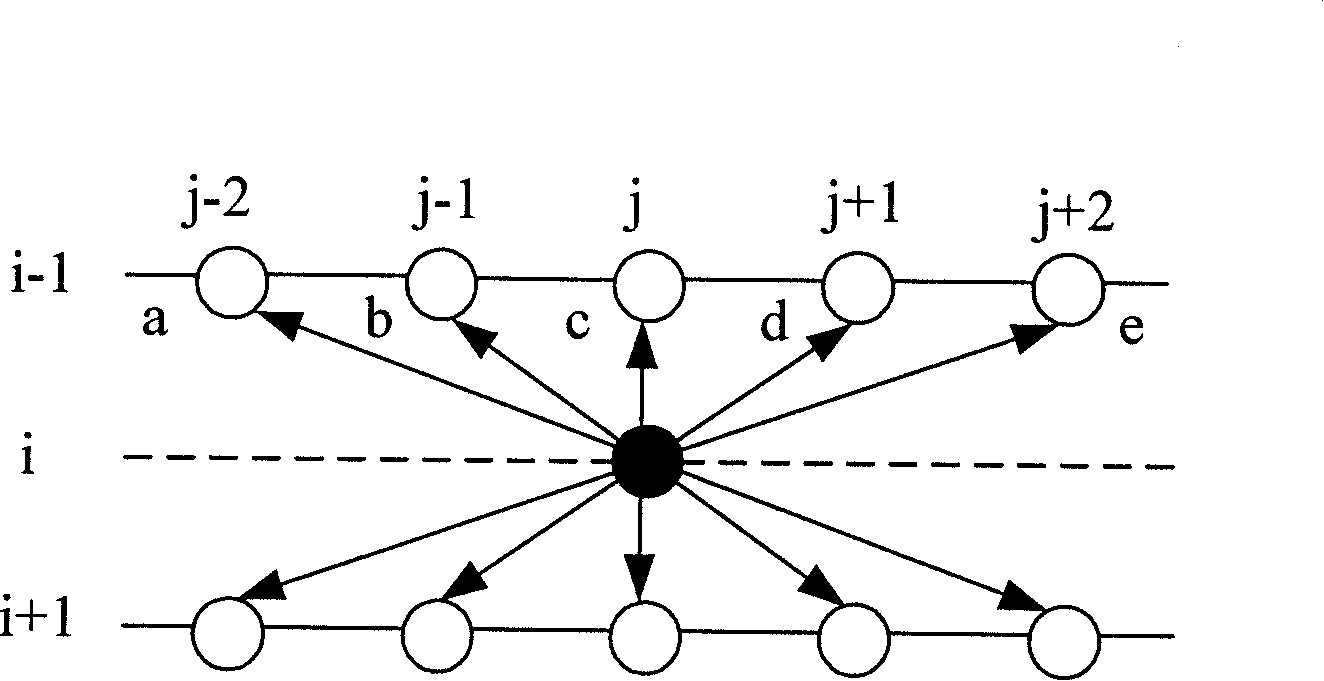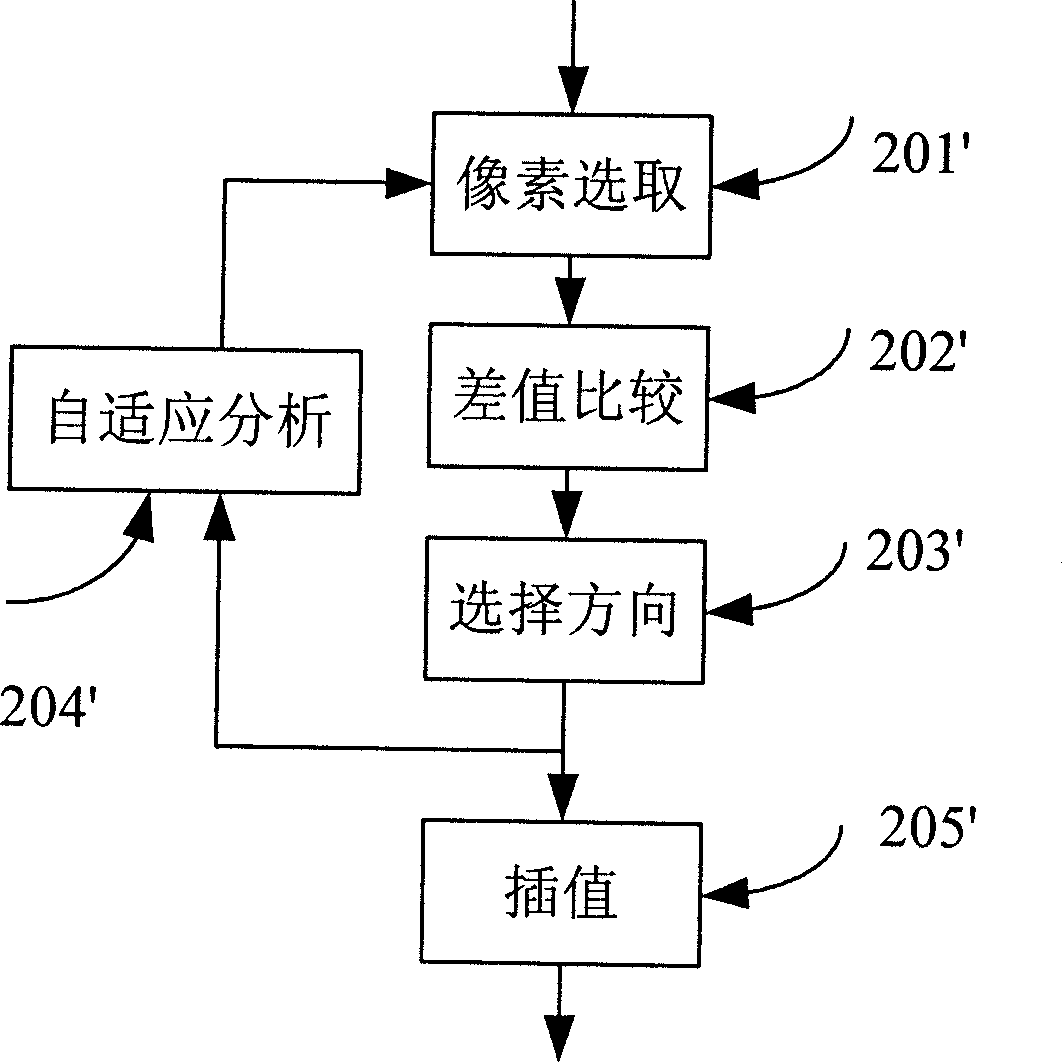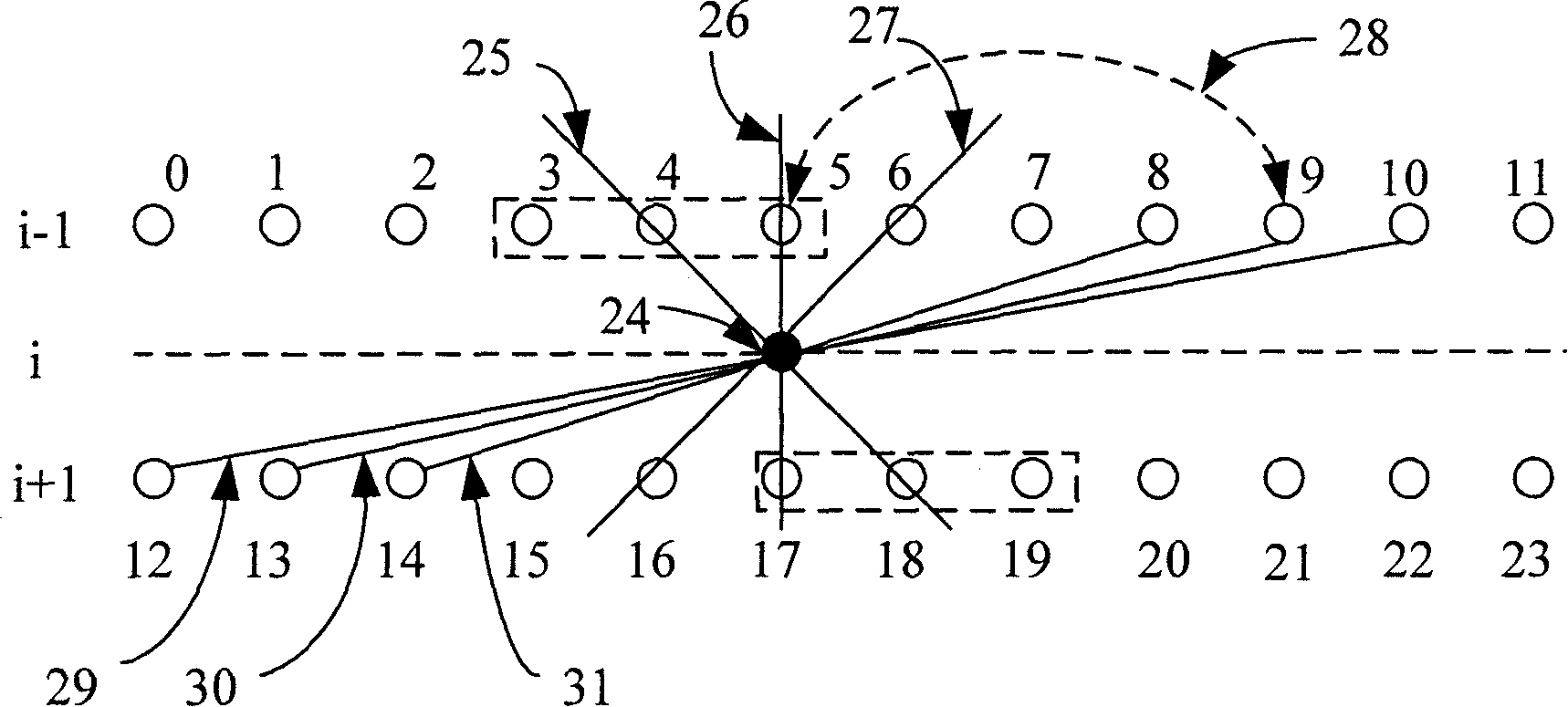Edge self-adapting de-interlacing interpolation method
An interpolation method and self-adaptive technology, applied in the direction of standard conversion, etc., can solve problems such as interpolation errors and inability to achieve good interpolation effects
- Summary
- Abstract
- Description
- Claims
- Application Information
AI Technical Summary
Problems solved by technology
Method used
Image
Examples
Embodiment Construction
[0055] as attached figure 2 Shown is the overall flowchart of the invention, reflecting four basic steps to realize the present invention:
[0056] Step (201'): select the set of surrounding pixels to be interpolated;
[0057] The three main directions for the point F(i, j) to be inserted are:
[0058] Main northwest direction: the straight line connecting point (i-1, j-1) and point (i+1, j+1);
[0059] Main north direction: the straight line connecting point (i-1, j) and point (i+1, j);
[0060] Main northeast direction: straight line connecting point (i-1, j+1) and point (i+1, j-1);
[0061] The pixel pairs associated with the three main directions are:
[0062] Main northwest pixel pair: ((i-1, j-2), (i+1, j)), ((i-1, j-1), (i+1, j+1)), (( i-1, j), (i+1, j+2));
[0063] Main north pixel pair: ((i-1, j-1), (i+1, j-1)), ((i-1, j), (i+1, j)), ((i- 1, j+1), (i+1, j+1));
[0064] Main northeast pixel pairs: ((i-1, j), (i+1, j-2)), ((i-1, j+1), (i+1, j-1)), (( i-1, j+2)...
PUM
 Login to View More
Login to View More Abstract
Description
Claims
Application Information
 Login to View More
Login to View More - R&D
- Intellectual Property
- Life Sciences
- Materials
- Tech Scout
- Unparalleled Data Quality
- Higher Quality Content
- 60% Fewer Hallucinations
Browse by: Latest US Patents, China's latest patents, Technical Efficacy Thesaurus, Application Domain, Technology Topic, Popular Technical Reports.
© 2025 PatSnap. All rights reserved.Legal|Privacy policy|Modern Slavery Act Transparency Statement|Sitemap|About US| Contact US: help@patsnap.com



